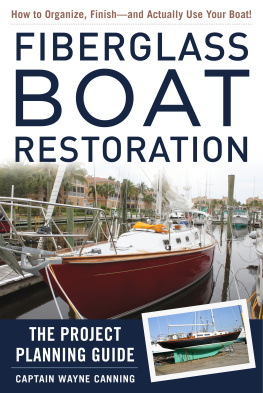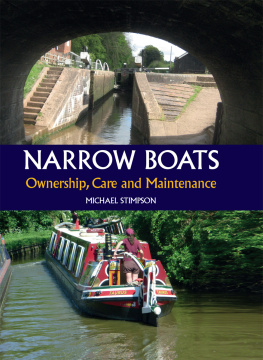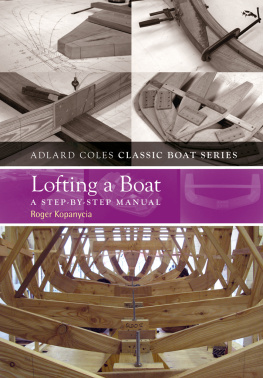Copyright 2017 by Wayne Canning
Unless otherwise noted, all photos by Wayne Canning.
All rights reserved. No part of this book may be reproduced in any manner without the express written consent of the publisher, except in the case of brief excerpts in critical reviews or articles. All inquiries should be addressed to Skyhorse Publishing, 307 West 36th Street, 11th Floor, New York, NY 10018.
Seahorse Publishing books may be purchased in bulk at special discounts for sales promotion, corporate gifts, fund-raising, or educational purposes. Special editions can also be created to specifications. For details, contact the Special Sales Department, Skyhorse Publishing, 307 West 36th Street, 11th Floor, New York, NY 10018 or .
Seahorse and Skyhorse Publishing is a registered trademark of Skyhorse Publishing, Inc., a Delaware corporation.
Visit our website at www.skyhorsepublishing.com
10 9 8 7 6 5 4 3 2 1
Library of Congress Cataloging-in-Publication Data is available on file.
Cover design by Tom Lau
Jacket photographs: Wayne Canning
ISBN: 978-1-944824-26-6
Ebook ISBN: 978-1-944824-27-3
Printed in China
Dedication
To all those fools who can see beyond the surface to the beauty within.
And to Teresa for her neverending faith in me.
Contents
Introduction
O ver the last thirty to forty years, boat builders, both large and small, have produced thousands of fiberglass boats. Fiberglass, unlike many other types of boatbuilding materials, does not rot, rust, or break down over time. In fact, fiberglass continues to cure and become stronger as it ages. As a result, there are now thousands of older, used fiberglass boats available, some in better shape than others. These boats can often be purchased for less than the price of a small used car. Older fiberglass boats can offer a significant bargain over that of a new or recent model used boat. However, it takes selection of the right boat, and careful planning, to truly come out ahead. As world problems, rising energy costs, and political frustration continue to grow, many would-be escapists dream of sailing off to a tropical paradise. Many without large sums of money to spend choose to purchase an older boat as an economical way to their planned adventures. Others simply want to experience the satisfaction of bringing something old back to life, either as a way to show off their skills or to simply enjoy the satisfaction of working with their hands. Additionally, more and more people are looking to live aboard a boat as a way to live near the water in places where most real estate has gotten prohibitively expensive. Project boats offer a way to these dreams; however they are not without their problems and pitfalls. This project planning guide offers information and advice not found in any other do-it-yourself boat repair book. Here you will find the tools and knowledge needed to select the right boat, plan the work, and budget your project for a successful completion.
Whatever the reason for wanting to take on the restoration of a project boat, proper planning and organization can mean the difference between success and failure. This is not a book about how to make a scarf joint or how to rebuild a motor; it is a book about how to put all your skills together in the right order to successfully complete a project boat restoration. It is a guide to getting the work done without getting in over your head and to help avoid the mistakes made by others. It will explain why it is important to put your efforts and resources into some areas and not others. It contains valuable information about what to look for when considering the purchase of a project boat, as well as what to avoid. Although the focus will be on fiberglass boats, this information will be useful to anyone undertaking the building or restoration of any type of project boat. The concepts of planning and organizing the work will apply to many types of boat projects, big or small, so even if you are only planning small improvements or thinking of a complete upgrade you will likely find much of the information within this book helpful.
1 What Is a Project Boat and Is One Right for You?
F or those of us with dreams bigger than our bank account, the prospect of owning a boat might seem out of reach. For others, the joys of working on and restoring a boat might be the dream itself. Anyone looking into owning a boat knows only too well the high cost of purchasing a new boat. Sticker shock can be as bracing as that cold winter wave over the bow. But for those who like to work with their hands and have some skills along with the desire to put out the effort, there are alternatives. A project boat might just fit the bill to get you on the water without having to mortgage your life away.
Before getting started, it helps to understand just what a project boat is so you can understand if one is right for you. A project boat can be anything from a small rowboat built from scratch to a mine sweeper converted into a world cruiser. Almost any boat qualifies as a project boat because, lets face it, almost all boats are a project in one way or another. Owners are always adding to or modifying their boats to fit their needs and tastes. In this sense, even a new boat can be considered a project boat of sorts.
For the purpose of this book I will narrow down the definition a bit and primarily focus on older fiberglass boats. Thats not to say the information in this book will not be helpful to anyone working on any other type of project boat. Big, small, wood, steel, or fiberglass, the principles are the same, but because the most common project boats are older fiberglass boats, that will be the focus of the information within this book.
The heyday of boat building came in the early sixties and continued through to the mid-nineties. During this period, many boat builders, big and small, opened their doors and began producing hundreds and sometimes thousands of cost-effective fiberglass boats. Because fiberglass molds were relatively easy and inexpensive to construct, builders could produce numerous identical vessels economically using just a few molds and simple tools. The boats produced by these companies ranged in size from small dinghies to large semi-custom yachts. Companies such as Pearson, Catalina, Hatteras and Carver grew to become large corporations by producing quality vessels at affordable prices, thus bringing the boating lifestyle to the middle class. Hundreds of smaller shops also opened their doors, producing limited runs of high-quality (and some not so high-quality)semi-custom boats. All types of vessels were produced, including powerboats, sailboats, trawlers, and commercial vessels. Because many of these early builders did not have the design or engineering expertise of todays builders, they often chose to overbuild. Materials were cheap and the consumer demanded heavy construction, so the tendency was to simply add more material to create a strong vessel. Thousands of solidly built boats were produced, many still in service today.

Early fiberglass boat building.
Because fiberglass does not rot like wood or rust like steel, many of these boats, even though they may have been neglected or even abandoned, may still be worth saving. Nobody really knows for sure how long a fiberglass boat will last; I have heard lifespans as short as ten or fifteen years to as long as 100 years. The fact is we know there are many boats still in service that are now over fifty-years-old and still going strong. As with many things, how well a boat was constructed and how well it has been cared for has an effect on its overall life span. Suffice it to say, the true lifespan of fiberglass has yet to be fully determined; age alone does not indicate if a boat is worth saving. Combine this with the ever-increasing price of new boats and these older boats may not be such a bad deal after all. Restoring an older boat can often give you a perfectly good vessel for a fraction of the cost of a new one. You also get the satisfaction of taking something old and making it new again. The saying They just dont build them like they used to really lends itself to older fiberglass boats. In many cases, fully restored older boats may often be even better than new boats because they are heavier built.








